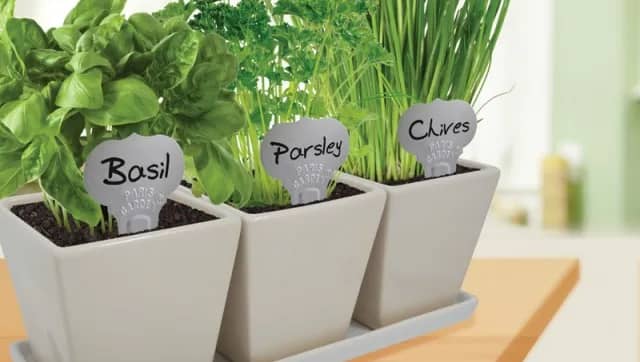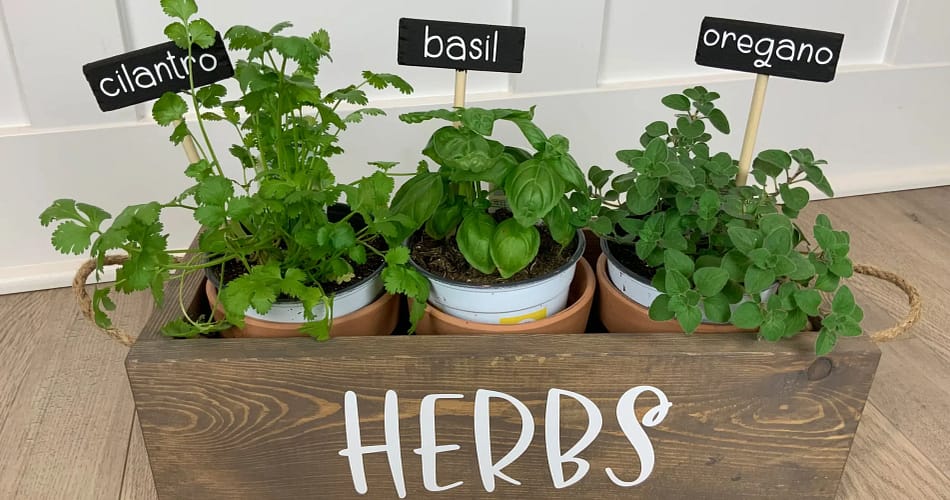Are you dreaming of fresh herbs at your fingertips, right from your kitchen? Imagine the aroma of basil wafting through your home or the sight of lush parsley brightening up your window sill. An indoor herb garden can make this dream a reality. Let’s dive into the world of indoor herb planters and explore how you can grow a thriving herb garden indoors.
10 Best Herb Garden Indoor Grow (2024) Tips and Care
Table of Contents
| Sr# | Headings |
|---|---|
| 1 | Introduction |
| 2 | Why Grow an Indoor Herb Garden? |
| 3 | Choosing the Right Indoor Herb Planter |
| 4 | Best Herbs to Grow Indoors |
| 5 | Setting Up Your Indoor Herb Garden |
| 6 | Light and Water Requirements |
| 7 | Soil and Fertilization |
| 8 | Managing Pests and Diseases |
| 9 | Harvesting Your Herbs |
| 10 | Creative Indoor Herb Planter Ideas |
| 11 | DIY Indoor Herb Planters |
| 12 | Benefits of an Indoor Herb Garden |
| 13 | Common Mistakes to Avoid |
| 14 | Frequently Asked Questions |
| 15 | Conclusion |
Why Grow an Indoor Herb Garden?
Growing herbs indoors is not just about having fresh ingredients for your recipes. It’s a delightful hobby that connects you with nature, even in the heart of the city. An indoor herb garden can bring life to your home, improve air quality, and offer a sense of accomplishment. Plus, it saves money on store-bought herbs, which can add up over time.
Choosing the Right Indoor Herb Planter
The first step to a successful indoor herb garden is selecting the right indoor herb planter. There are many options available, from traditional clay pots to modern self-watering planters. Consider the following when choosing your planters:
- Size: Ensure your planter has enough space for the herb’s root system.
- Drainage: Proper drainage system is crucial to prevent root
- Material: Choose between plastic, clay, ceramic, or metal based on your aesthetic preference and budget.
Best Herbs to Grow Indoors
Not all herbs thrive indoors, so it is very important to pick the good one . Here are some of the best herbs for indoor gardens:
- Basil: Loves warmth and plenty of light.
- Mint: Easy to grow and spreads quickly.
- Parsley: Prefers cooler temperatures.
- Thyme: Needs minimal care and water.
- Cilantro: Requires consistent moisture.
- Chives: Great for window sills.
- Oregano: Thrives in well-drained soil.
- Sage: Prefers dry conditions.
- Rosemary: Needs a sunny spot.
- Lemon Balm: Grows well in partial shade.

Setting Up Your Indoor Herb Garden
Setting up your indoor herb garden involves a few simple steps:
- Select a Location: Choose a spot with adequate light. A south-facing window is ideal.
- Prepare the Planters: Ensure they have good drainage and are filled with high-quality potting mix.
- Plant the Herbs: Follow the specific planting instructions for each herb.
- Keep the soil moist but not waterlogged.
Light and Water Requirements
Herbs need the right amount of light and water to thrive.Most herbs need a minimum of 6-8 hours of sunlight each day. If there’s not enough natural light, think about using grow lights. Watering needs vary, but a general rule is to water when the top inch of soil feels dry to the touch.
Soil and Fertilization
Using the right soil mix is crucial for indoor herbs. A well-draining potting mix is recommended. Use a balanced, water-soluble fertilizer on your herbs every 4-6 weeks to provide essential nutrients.
Managing Pests and Diseases
Indoor herbs can be susceptible to pests like aphids and spider mites. Keep an eye out for signs of infestation and treat promptly with natural remedies or insecticidal soap.Maintain proper air flow to avoid fungal infections.
Harvesting Your Herbs
Harvesting your herbs correctly will encourage growth. Pinch off leaves or stems as needed, but avoid taking more than one-third of the plant at a time. Regular harvesting can actually stimulate more growth.
Creative Indoor Herb Planter Ideas
Get creative with your indoor herb planters. Here are some ideas:
- Mason Jars: Perfect for small spaces and add a rustic charm.
- Hanging Planters: Save counter space and create a green wall.
- Teacups: A cute and quirky option for small herbs.
- Vertical Planters: Ideal for maximizing space in small apartments.
DIY Indoor Herb Planters
Making your own indoor herb planters can be a fun and rewarding project. Here are some DIY ideas:
- Recycled Containers: Use old cans, bottles, or jars.
- Wooden Boxes: Build a custom planter box from reclaimed wood.
- Pallet Planters: Create a vertical garden using an old pallet.
Benefits of an Indoor Herb Garden
An indoor herb garden offers numerous benefits:
- Fresh Herbs Year-Round: Enjoy fresh herbs anytime.
- Cost Savings: Save money on store-bought herbs.
- Health Benefits: Herbs like mint and basil have health benefits.
- Decorative: Adds a touch of greenery and beauty to your home.
Common Mistakes to Avoid
Avoid these common mistakes to ensure a thriving indoor herb garden:
- Overwatering: Can lead to root rot.
- Insufficient Light: Herbs need plenty of light to grow.
- Poor Soil: Use high-quality potting mix.
- Neglecting to Harvest: Regular harvesting encourages growth.
Frequently Asked Questions
1. What are the best herbs to grow indoors?
A few top herbs to cultivate indoors are basil, mint, parsley, thyme, cilantro, chives, oregano, sage, rosemary, and lemon balm.
2. How much light do indoor herbs need?
Most indoor herbs need at least 6-8 hours of sunlight daily. If natural light is enough, make using grow lights.
3. How often should I water my indoor herb garden?
Water your indoor herbs when the top inch of soil becomes dry. Be careful not to over water, as this can cause root.
4. What type of soil is best for indoor herbs?
A well-draining potting mix is ideal for indoor herbs.Make sure it has good aeration and retains sufficient moisture without becoming waterlogged.
5. Can I use any container for my indoor herb planter?
Yes, as long as the container has adequate drainage and is the right size for the herb’s root system, you can use a variety of containers, from traditional pots to creative DIY planters.

